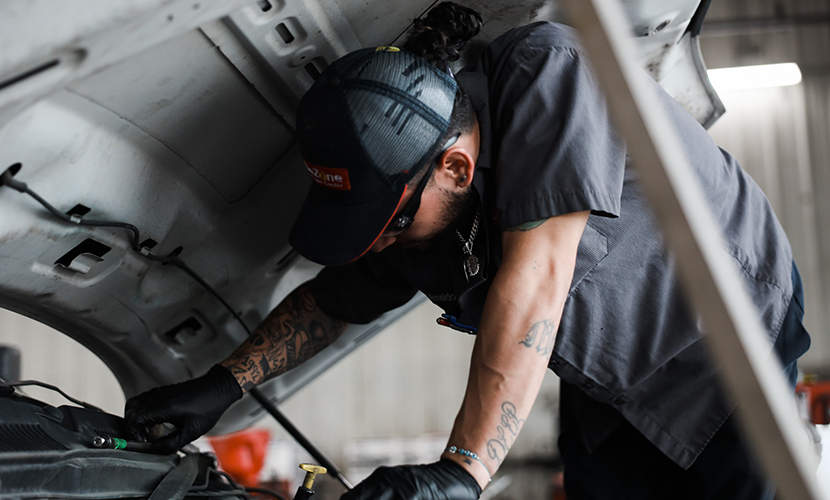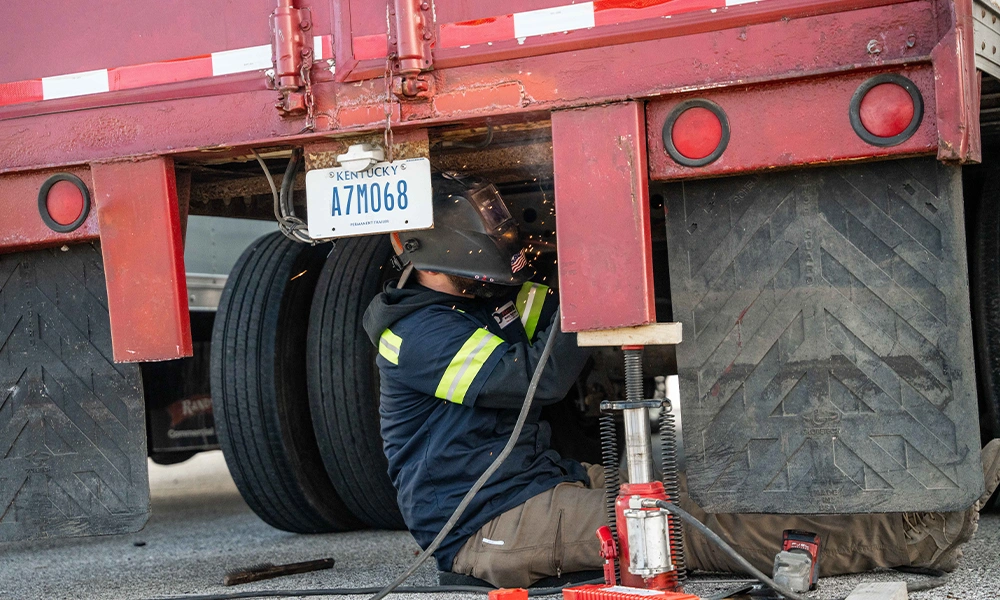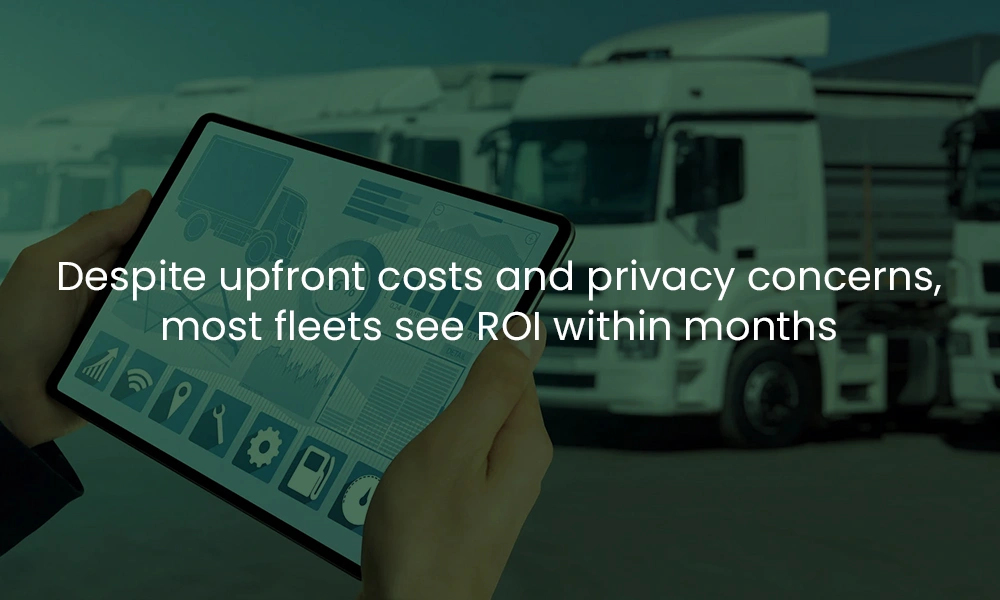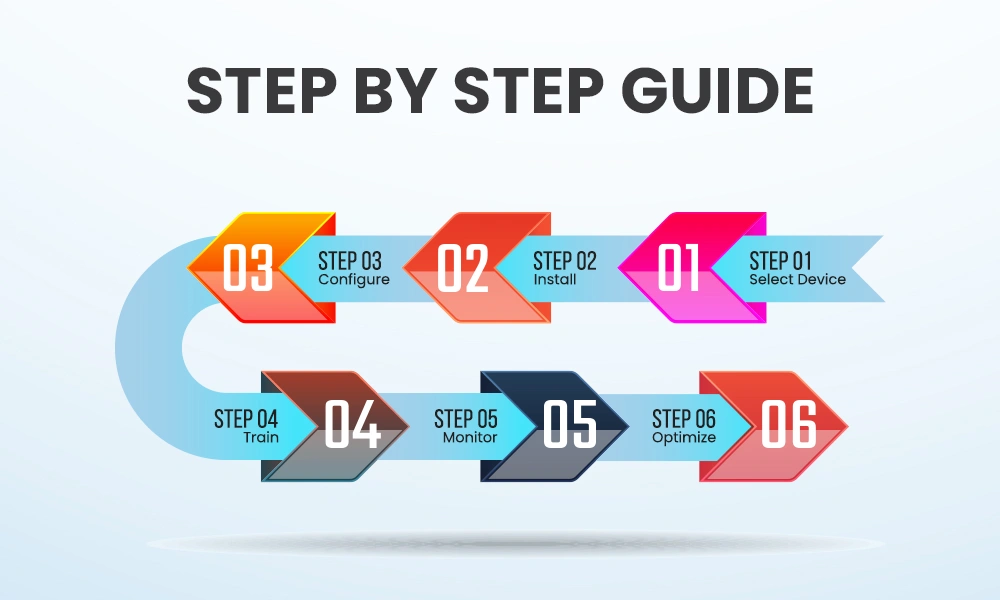What is Fleet Telematics?

What is fleet telematics? Fleet telematics is a game-changer for modern trucking and logistics. In today’s competitive landscaspe, understanding what is fleet telematics can help you stay ahead of the curve and keep your trucks rolling smoothly. These telematics systems gather data on vehicle location, engine performance, fuel usage, and driver behavior, giving fleet managers the insights they need to boost efficiency, Safety, and cost control.

Telematics for fleet management isn’t just about tracking trucks; it’s about making smarter decisions. With a telematics system installed in each vehicle, data flows seamlessly from the road to your office, allowing you to optimize routes, reduce idle time, and catch maintenance issues before they become costly breakdowns. Trucking telematics also help with regulatory compliance, theft prevention, and driver accountability. If you’re wondering what telematics in a truck is or what telematics in trucks are, it’s the technology that keeps your fleet connected, efficient, and ready for whatever the road throws your way. Ready to take your fleet to the next level? Explore more about telematics vehicle tracking and proven strategies for fleet efficiency at Epika Fleet.

How Does Telematics Technology Work?
Telematics technology integrates different features like GPS, telecommunications and onboard diagnostics into a single system the collects and transmits vehicle data on continues basis. In trucks, a central dashboard receives real-time location, engine status, fuel consumption and driver inputs via cellular or satellite networks. Think of it as your fleet’s digital nerve center.
It allows managers to optimize routes, early maintenance needs, flag unsafe driving patterns by pulling live data from control module and sensors. A fleet’s performance and health can be monitored in real-time, allowing fleet managers to make faster and smarter decisions without waiting for problems to arise. Dive deeper into best practices and real-world strategies at Epika Fleet.
What Information Does Telematics Gather?
A telematics device is installed in a truck and linked to your fleet management platform. It combines features of an ELD (electronic logging device) and a GPS tracker. Each summary report is sent back to home base where it can be tracked individually and in aggregate. Fleet telematics in action, demonstrating how data is integrated to improve management.
 GPS location and route data: Travel direction, route history and vehicle position.
GPS location and route data: Travel direction, route history and vehicle position.
 Fuel usage: Idle time, anomalies such as potential leaks or theft.
Fuel usage: Idle time, anomalies such as potential leaks or theft.
 Odometer readings: These precise reporting and scheduling are used in mileage tracking.
Odometer readings: These precise reporting and scheduling are used in mileage tracking.
 Driving habits: Acceleration, braking, speeding and service hours.
Driving habits: Acceleration, braking, speeding and service hours.
 Trouble codes: Onboard computers identify fault indicators and dashboard warnings.
Trouble codes: Onboard computers identify fault indicators and dashboard warnings.
Fleet telematics can easily collect detailed information about tracking vehicle speed, location and its route map. This data can be merged and aggregated to create fleet performance reports and driver behavior. Dashboard cameras integrated with these systems which used to record truck collisions and hard braking issues automatically, through this data per vehicle which is aggregated throughout the fleet, managers have visibility at both macro and micro levels.
How Telematics Improve Fleet Operations?
Understanding what is fleet telematics is key to unlocking smarter, more efficient fleet operations. By using telematics systems, fleet managers gain real-time insights into vehicle location, driver behavior, and vehicle health. This data helps reduce fuel costs, optimize routes, and improve driver safety, all while keeping your trucks on the road longer and minimizing downtime. For more insights on optimizing your operation, explore these fleet management best practices.
Telematics for fleet management goes beyond simple tracking. With telematics vehicle tracking and diagnostics, you can monitor engine performance, schedule preventive maintenance, and catch issues before they become costly repairs. Additionally, understanding telematics technology enables you to leverage data to coach drivers and promote safer driving habits, ultimately reducing accidents and insurance costs. Understanding the most common fleet accidents can help you tailor your telematics usage for improved safety outcomes.
Telematics solutions help ensure drivers follow hours-of-service rules and other regulations, reducing the risk of violations. Integrating telematics with your existing fleet management software creates a centralized platform for managing dispatch, maintenance, and reporting.

How Does Telematics Help Manage Fleet Maintenance?
Proactive fleet maintenance, which includes real-time monitoring of the vehicle’s condition, tire pressure, fluid levels, system alarms, and engine diagnostics, is one of the numerous advantages of telematics. Discover how to manage the cost of oil changes. This level of insight is especially valuable in trucking telematics, where vehicle uptime has a direct impact on profitability. Consequently, managers are able to identify minor issues before they escalate into more expensive issues that require attention.
Fleets can use historical maintenance logs, automatic service reminders, and driver behavior data (such forceful braking or over-idling) to develop preventative maintenance programs that can prolong truck life and keep them road-ready. By making maintenance predictable rather than reactive, telematics essentially lowers the number of roadside failures while also saving money. To dive deeper into optimizing your fleet maintenance with telematics, visit Epika Fleet’s blog on fleet maintenance costs and discover practical strategies tailored for busy fleet professionals.
What Are the Benefits of Telematics Technology for Fleet Managers?
It’s one thing to know, in the abstract, what is fleet telematics and the information you’re gathering. It’s another thing to know what that information means and how to use it. So, what are the benefits of gathering all of the above information, reading reports on vehicles and drivers, and knowing the overall state of your fleet?
Reduced fuel costs. Many different elements of a driver’s daily life can consume excess fuel, and telematics information can help reduce that excess fuel usage. For example:
- Telematics systems can find more efficient routes that burn less fuel to reach a destination. Learn more about fleet fuel efficiency.
- Telematics can identify cases of excess engine idling, identify the causes, and help you avoid them.
- Telematics can identify potential problems or inefficiencies with the vehicles to help you schedule more proactive maintenance and boost fuel efficiency.
- Telematics for fleet management can flag unauthorized equipment usage.
Since fuel costs are one of the largest expenses associated with operating a fleet, even a small percentage reduction in fuel usage can result in significant savings across the company.
More proactive and preventative maintenance. Trucks wear down over time; it’s just a fact of life. Generally, problems can be identified before instruments, or the onboard computer recognizes a problem by using telematics data to monitor performance trends. Furthermore, if a driver resolves an issue with a vehicle but fails to report it, the telematics system can still detect and report it. These minor flags and issues can all add up to a need for maintenance and a warning: something might break soon. By scheduling the vehicle for maintenance before something breaks and leaves a driver and load stranded on the highway, you save time, money, and effort.
Simplified communication and record-keeping. A significant part of a fleet manager’s job is managing the paperwork associated with tracking various aspects, including load weights, driver certifications, and vehicle status. With telematics in a truck and vehicle tracking, all of this can be remotely tracked and assembled into useful reports. Moreover, if any of it needs to be checked and verified by police, DOT officers, or other authorities, the reports are readily available and verifiable.
Improved Safety. Safety comes up in many different forms, and what is telematics in trucks and trucking telematics technology can address most of them.
- If a vehicle is being used outside of operating hours or by unauthorized individuals, it can be flagged.
- If a driver is operating beyond their legal limits, they can be flagged.
- If a vehicle is stolen, its location can be tracked for asset recovery. Discover more about the benefits of GPS vehicle tracking.
- If a vehicle deviates from its route, it can be flagged, and an explanation may be required.
This increases the overall Safety of your fleet by improving both vehicle and driver accountability. It can also save your fleet money; many commercial vehicle insurance providers will offer discounts for vehicles equipped with GPS tracking and telematics technology.
Predictive analytics. By viewing your fleet as a whole, you can estimate upcoming fuel expenditures, predict maintenance scheduling dates, and even gauge the types of parts or maintenance that need to be replaced, ensuring your fleet maintenance teams have the necessary items on hand. This can significantly reduce downtime and speed up maintenance.
Additionally, this all helps to lower the administrative overhead a fleet manager is responsible for. It reduces the amount of paperwork and manual data entry (and thus human error) while automatically maintaining logs. Information and reports are readily available at your fingertips rather than requiring manual digging through data.
From improving routing to preventing catastrophe, the information provided by a telematics device in a given vehicle can yield a substantial amount of savings in both time and money. With a bird’s-eye view of your entire fleet, you can make informed decisions based on real-time location and operational data that you wouldn’t otherwise have access to, demonstrating clearly how telematics technology works in practice.

Are There Downsides to Telematics Technology?
No technology is without problems, and telematics is no different. There are three major categories of issues that can come up with telematics systems.
The first is the expense for fleets. Telematics devices can be relatively inexpensive, with some coming in under $100. Others may be significantly more expensive, with higher-quality, more capable devices costing more. Active tracking also typically requires a connection to GPS and cell service, which generally incurs a monthly fee. The software to set it all up, the tablets to monitor it in the vehicles, and the receivers can all be additional costs as well. This is an important factor to consider when evaluating what is fleet telematics for your operation.
That said, you save a lot of money by implementing what is telematics and making use of the technology. Additional fuel efficiency, increased productivity, preventative maintenance that can delay or prevent major issues and downtime, and even insurance premium reductions can all result from using telematics for fleet management. You can also avoid fines and penalties by flagging behavior before the police, DOT, or through an accident. In other words, these telematics systems rapidly pay for themselves once you’re past the hump of the initial expense. To further reduce accident risk, explore effective fleet accident management strategies that leverage telematics data.
The second is the maintenance burden for the technology. Telematics devices are computers, and they often have complex software that has been developed over the years, frequently lacking modern design sensibilities. Some may make it hard to diagnose and troubleshoot bugs. Some have issues with software and firmware updates. Some are simply of low quality and frequently lose tracking or connection. Devices can overheat or be damaged by vibration. It can take a considerable amount of time and research to identify high-quality trucking telematics systems and separate them from the multitude of cheap devices.
Installing, configuring, syncing, testing, and maintaining a telematics system is a burden that exceeds what is required when using the bare minimum of passive GPS trackers and ELDs necessary to satisfy DOT regulations. But, again, the benefits typically outweigh this additional burden.
The third is the potential for privacy concerns. With always-on GPS tracking embedded in a vehicle, drivers may be concerned about it tracking various personal information about them, including locations of things like their kids’ schools, their homes, or their common habits. This is a common concern when discussing what telematics are in a truck and what telematics are used in trucks.
Many modern vehicle telematics devices address this issue by allowing a driver to toggle an “off-duty” mode that either disables GPS tracking or, more commonly, broadens the tracking area to be significantly less specific.
Additionally, consent is frequently required to implement this kind of tracking. Drivers are informed that their locations are tracked, and this is often a condition of employment.
Truthfully, while there’s some validity to privacy concerns, most possible scenarios where the information is abused are hypothetical; meanwhile, several lawsuits have been litigated and have upheld the legality of GPS tracking for fleet vehicles. It would be a different story if you were tracking drivers’ vehicles, but there’s no reason to do so.
This balance of benefits and challenges is crucial to understand how telematics technology works and its impact on fleet operations.
How Much Does Telematics Cost?
Budgeting for fleet managers requires an awareness of telematics expenses. The average monthly cost of telematics systems for each vehicle is between $10 and $50. Features, hardware, installation, fleet size, and subscription fees all affect this price.
1. Feature Requirements and System Capabilities
GPS tracking and driver monitoring are included in basic plans. Advanced plans, which are more expensive, offer engine diagnostics and real-time reporting.
2. Hardware Costs (Purchase or Rental)
You can buy or rent these devices, which range in price from $50 to over $300. High-quality hardware can improve data accuracy and reduce maintenance.
3. Installation Costs (Professional vs. Self-Install)
To ensure correct setup, you can choose a professional installation; alternatively, you can save money by doing it yourself.
4. Fleet Size and Contract Structure
Because of economies of scale, larger fleets frequently pay less per vehicle.
5. Subscription Fees and Ongoing Service Costs
For deeper insights, premium plans cost more. These monthly fees cover software, data analytics, and support.
Ultimately, by reducing fuel and maintenance expenses and enhancing safety, telematics investments can yield substantial returns. To explore cost-effective solutions tailored to your fleet, visit Epika Fleet and discover how telematics technology can transform your fleet operations.

Implementing Telematics Technology for Your Fleet
Suppose you’re looking to implement telematics technology for your fleet vehicles. In that case, you need one thing above all else: trained and experienced technicians who are familiar with the installation and configuration of these telematics systems.
This is one way we at Epika Fleet can help you improve your fleet management. Our nationwide network of service providers includes many such technicians, familiar with a wide range of different brands and options for telematics vehicle tracking.
Moreover, once you’re connected to our network of service providers, you can also utilize those same technicians for preventive maintenance, proactive monitoring, scheduled service, and unscheduled service. Whether you need a truck towed from the side of the road or a routine oil change, there’s nearly guaranteed to be a service provider near you who can help. All you need to do is find a service provider today and start benefiting from expert support in what is fleet telematics and telematics technology.
